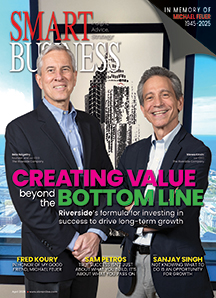Yuval Brisker helps his customers help their customers.
He co-founded TOA (Time of Arrival) Technologies, a software provider for companies managing mobile work forces, to improve the customer experience by coordinating technicians’ schedules.
But the basis of his business isn’t enough to prove how important customer satisfaction is to him. Brisker, the president and CEO, knows that it really comes from relationships.
“It’s not always about making money from them right on the spot,” says Brisker, whose company has grown to about 140 employees from 60 at the beginning of 2007. “If you can secure a relationship of collaboration in the long term, that will yield benefits for both sides, for the customer and for you.”
The first key to building that collaborative relationship is showing that you’re ready to respond to a customer’s needs.
“It’s about showing up,” Brisker says. “It’s creating that kind of environment to have a dialogue.”
So let customers know how they can reach you without interruption, whether it’s face to face or over the phone. Then follow through by keeping appointments and returning messages promptly. Make it easy for customers to reach you.
“If they’re waiting for you to respond more than a day or two, then that’s way, way too long,” Brisker says. “The speed of response helps increase and enhance the collaborative approach. So the speed that I’m talking about is not speed of producing the result, but just the speed of interaction and how readily you’re available, how quickly you’re willing to be there, how fast you’re basically putting yourself into the dialogue.”
You have to establish that willingness upfront. Before customers even ask anything of you, let them know that their needs are your priorities and you’ll do what you can to satisfy them.
Brisker calls this the yes approach.
“You first have to come in with a yes. We say, ‘The answer is yes. What’s the question?’” he says. “I think that changes the way that customers will interact with you. They’ll know that your point of departure is flexibility and your desire to actually listen to them and work with them to find a solution. You’re already saying, ‘I’m here to listen and I’m going to try and figure out a way to make my response positive, not negative.’”
But actually listening to their needs is only half of the battle. The real challenge is showing them that you’re listening, which you can do with simple body language cues.
“Come out there with your … body language about it, leaning forward to understand what people are saying,” Brisker says. “It’s not furrowed brows, it’s not a low forehead, and it’s not a look of anxiety and tenseness. It’s not sitting in a scrunched up way or leaning back but more like leaning in and looking relaxed. All those things come together in a way that says that you’re open.”
Just because you’ve approached the relationship with a yes on the tip of your tongue and collaboration as your goal does not mean that you roll over and give customers whatever they want, though. When possible, look for ways to stretch your abilities and offer extensions of your services.
But if their request is clearly outside of your company’s realm, be honest about it.
“Then there’s an option to say either, ‘This is going to be a collaboration; we need to invest in it jointly in terms of our time and our efforts,’ or, ‘I’ll do this, but it’s going to take more time,’ or, ‘This is just not something that we do,’” Brisker says. “It’s really about just saying it and being clear.”
Measure the effect
Yuval Brisker thinks that if something is worth doing, it better be measurable, too.
Sure, his focus is on building collaborative relationships with the customers of TOA Technologies Inc. But he thinks you should be able to apply metrics to that relationship.
Brisker, the co-founder, president and CEO, recommends establishing a goal with your customers upfront. Then your whole relationship will be guided by the end results.
“Set a path to more steps,” he says. “Because the key to successful interactions is having a continuous dialogue, not just taking one big step and that’s it. It’s about the continuity of communication.”
When Brisker meets with customers, they look at every service TOA offers and how it can benefit them.
“We go through every single line item of potential expense and reduction and enhancement that could be affected and see how we can make that more profitable for them,” he says. “Again, it’s collaboration. It’s understanding where they see opportunities, where they see holes in the value proposition and making sure that we’re aligned with their goals.”
Whether it’s increasing business, reducing cost or improving the customer experience, you and your customers should agree on the goal beforehand. Also set criteria by which your success will be measured in the end.
“If you’re not helping your customers become more successful,” Brisker says, “then you’re not really contributing.”

